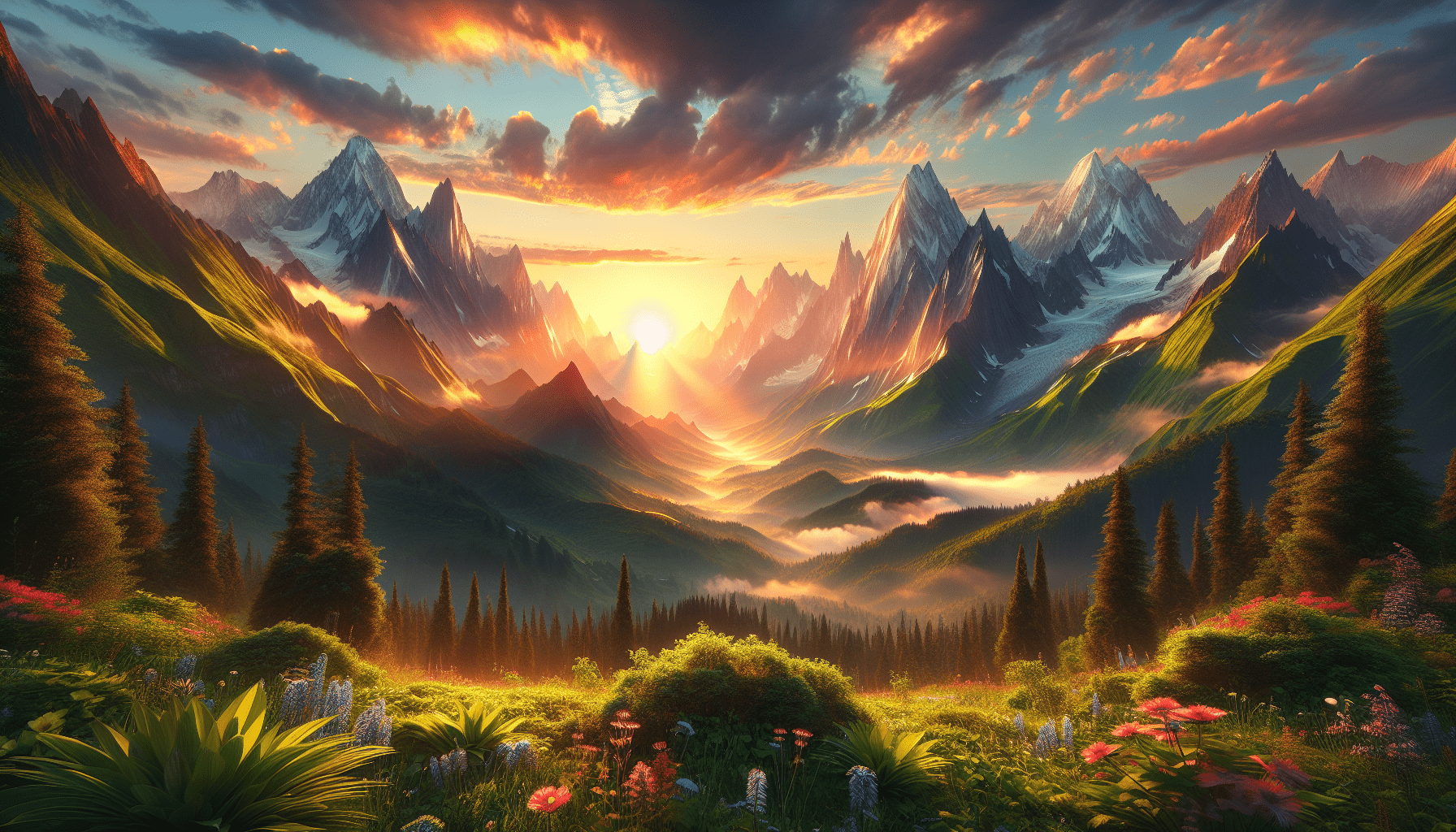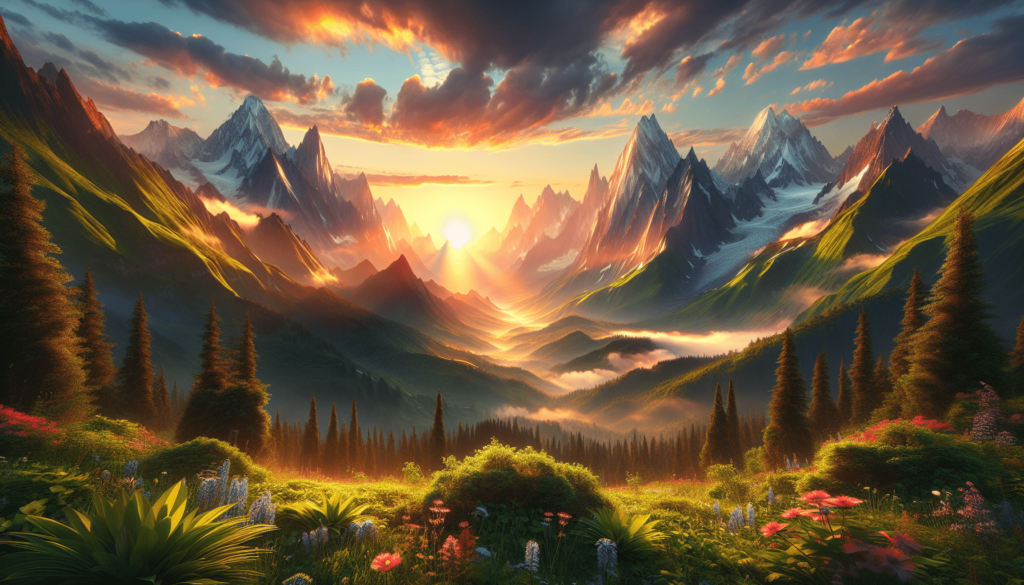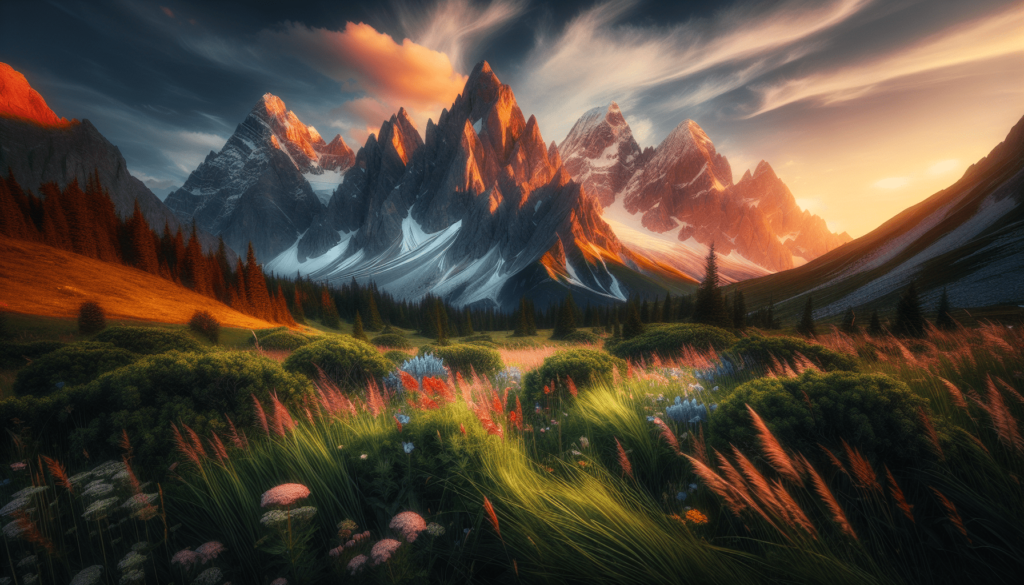Your cart is currently empty!
Exploring the Majestic Mountain Landscapes

What comes to mind when you think of majestic mountain landscapes? Perhaps it’s the towering peaks dusted with snow, the rich greens of the valleys, or the serene stillness that envelops these regions. Whether you are planning a trip or simply want to know more about these stunning natural wonders, there’s so much to discover!
The Allure of Mountains
Mountains have a unique charm that captivates many people. They symbolize strength, resilience, and tranquility, offering a place where you can escape the hustle and bustle of daily life. Their sheer size and beauty inspire awe and admiration. If you’ve ever stood at the foot of a mountain, you probably felt both small and spectacular, surrounded by natural glory.
The Different Types of Mountain Landscapes
Mountains come in various forms, each with distinct features and ecosystems. Understanding these types can enhance your appreciation for them.
1. Majestic Peaks
These mountains often feature jagged, towering summits, creating dramatic silhouettes against the sky. They are frequently adorned with glaciers and provide breathtaking vistas for hikers and climbers.
2. Rolling Hills
Contrasting with the sharp ascents of majestic peaks, rolling hills offer a gentler landscape. Ideal for leisurely walks and picnics, they maintain their charm with lush greenery and sprawling views.
3. Volcanic Mountains
Born from the fiery depths of the Earth, volcanic mountains showcase a dynamic landscape. Their rugged terrain may often include craters, lava flows, and unique geological formations.
4. Fold Mountains
The product of tectonic plate movements, fold mountains create valleys and ridges, adding a distinct texture to the landscape. The Himalayas and the Alps are prime examples, each offering extraordinary beauty.
The Importance of Mountains
Several layers of significance surround mountain landscapes. Beyond their breathtaking beauty, they play crucial environmental, cultural, and economic roles.
Environmental Impact
Mountains often serve as critical watersheds, capturing rainfall and influencing spring water availability. They create diverse habitats that support numerous plant and animal species, many of which are unique to specific mountains.
Cultural Significance
Many cultures regard mountains as sacred spaces, weaving them into their myths, festivals, and traditions. They often symbolize a spiritual journey, where the trek up the mountain parallels personal growth.
Economic Importance
Mountains can also provide economic benefits through tourism, agriculture, and resource extraction. Activities like skiing, hiking, and mountaineering attract visitors from all over, contributing to local economies.
Themes in Mountain Landscapes
When you look at mountains, certain themes may arise, reflecting the journey and the experiences they offer. Understanding these themes can enrich your outdoor adventures.
Adventure and Exploration
The spirit of adventure thrives in mountains. You might find yourself challenged by steep trails, majestic peaks, and unpredictable weather. Embracing the unknown is part of the mountain experience and often leads to unexpected treasures.
Serenity and Solitude
Mountains often provide a peaceful retreat for those seeking solitude. The stillness, coupled with breathtaking views, creates a perfect backdrop for reflection or simply unwinding. Time spent in mountain landscapes can rejuvenate both the spirit and mind.
Connection to Nature
Being in the mountains instills a deeper appreciation of nature’s wonders. You may observe the intricate ecosystems, witness wildlife in their natural habitat, and marvel at the interplay between light and shadow on the rugged terrain.

Preparing for Your Mountain Journey
Before embarking on your mountain adventure, preparation is key. You’ll want to ensure a safe and enjoyable experience. Here are some handy tips to help you plan your excursion.
Research the Area
Whether you’re heading to the Rockies or the Andes, familiarize yourself with the specific mountain range you plan to visit. Consider its weather patterns, wildlife, and climate conditions.
Physical Fitness
Mountains can be demanding, so it helps to be in good physical shape. Engage in cardio and strength training exercises to prepare your body for the demands of hiking or climbing.
| Activity | Benefit |
|---|---|
| Hiking | Builds endurance and leg strength |
| Cycling | Improves cardiovascular health |
| Strength Training | Increases muscle strength for climbing |
Gear Up
The right gear can significantly enhance your mountain experience. Here’s a basic checklist to keep in mind:
- Footwear: Invest in sturdy hiking boots for stability and support.
- Clothing: Layering is essential. Choose moisture-wicking base layers and an insulated jacket.
- Navigation Tools: Carry maps, compasses, or GPS devices to navigate rugged terrains.
Safety Measures
Safety should always be a top priority in mountain landscapes. Make sure to inform someone about your plans and carry a first-aid kit. Being aware of altitude sickness symptoms and knowing how to handle emergencies is also vital.
Iconic Mountain Ranges Around the World
As you contemplate mountains, you may wonder which ranges are heralded for their spectacular landscapes. This section highlights some of the most renowned mountain ranges globally.
The Himalayas
Stretching across five countries, including India and Nepal, the Himalayas house the world’s highest peaks, including Mount Everest. This range is celebrated for its stunning scenery, rich biodiversity, and unique culture of the Himalayan people.
The Rockies
In North America, the Rocky Mountains offer a dramatic backdrop featuring steep cliffs, deep valleys, and breathtaking lakes. Their vast national parks, such as Rocky Mountain National Park in Colorado, support a variety of outdoor activities year-round.
The Alps
Famed for their picturesque villages and ski resorts, the Alps stretch across eight countries in Europe. Iconic peaks like Mont Blanc draw millions each year for skiing and mountaineering adventures.
The Andes
As the longest continental mountain range, the Andes run along the western edge of South America. This range boasts a rich cultural heritage, with numerous archaeological sites like Machu Picchu nestled within its hills.
The Appalachians
One of the oldest mountain ranges in North America, the Appalachian Mountains provide diverse habitats and scenic views. With well-marked trails such as the Appalachian Trail, it’s a haven for hiking enthusiasts.

The Flora and Fauna of Mountain Landscapes
Mountain ecosystems support unique flora and fauna due to varying altitudes and climates. Understanding these ecosystems can heighten your appreciation for the environment.
Vegetation Zones
As you ascend in altitudinal levels, you may encounter various vegetation zones:
- Montane Zone: Rich with deciduous and coniferous trees, this zone thrives at lower elevations.
- Subalpine Zone: Characterized by stunted trees and dense shrubs, this zone prepares you for the barren ground above.
- Alpine Zone: Above the tree line, flora includes hardy grasses, moss, and colorful wildflowers that bloom in the brief summer months.
Wildlife
Mountain landscapes are rich in wildlife, with many species adapting to high-altitude conditions:
| Animal | Adaptation |
|---|---|
| Mountain Goat | Specialized hooves for rocky terrains |
| Snow Leopard | Thick fur for insulation against cold |
| Alpine Marmot | Hibernation during winter to conserve energy |
The Spiritual and Cultural Connection to Mountains
Mountains have long been symbols of spiritual significance in various cultures. Different societies revere these structures for their majesty and mystique.
Sacred Sites
Many mountain ranges house sacred sites significant to local and indigenous populations. For instance, Mount Kailash in Tibet is revered in Buddhism, Hinduism, and Jainism. Pilgrimages to these sacred sites connect individuals with spiritual beliefs and traditions.
Cultural Festivals
Mountains play a significant role in annual festivals celebrating local traditions and customs. People may host cultural events during particular seasons or when certain peaks are illuminated by the summer sun, showcasing a blend of nature, culture, and community.
Artistic Inspiration
The stunning beauty of mountains has inspired countless artists, writers, and musicians. From paintings that capture the essence of a landscape to literature that describes the serenity and challenges of mountain life, these natural monuments influence creativity across cultures.
Sustainable Tourism: Protecting Mountain Landscapes
As the popularity of mountain tourism grows, it’s essential to consider the environmental and social impacts of your travels. Sustainable practices will help preserve these landscapes for future generations.
Responsible Hiking and Camping
When hiking and camping in mountain areas, adhere to the principles of Leave No Trace. This involves minimizing your impact on the environment by staying on marked trails, packing out all trash, and respecting wildlife.
Supporting Local Economies
Opt for local guides and accommodations when visiting mountain regions to contribute to the local economy. This choice often enhances your experience, as locals can share unique insights about their culture and the landscape.
Awareness of Climate Change
Mountains are often on the front lines of climate change, with rising temperatures leading to glacial melting and habitat loss. Staying informed and supporting conservation efforts can play a part in preserving these vital ecosystems.
Activities Awaiting You in the Mountains
There’s no shortage of activities that invite you to engage with mountain landscapes. Whether you’re a seasoned adventurer or someone looking for leisurely pursuits, mountains offer something for everyone.
Hiking and Trekking
Hiking allows you to immerse yourself in nature while providing an excellent workout. From easy trails to challenging climbs, there’s a hike suited to your skill level.
Climbing and Mountaineering
For the more adventurous, rock climbing or mountaineering can be exhilarating. These activities require proper training and equipment but offer unparalleled views and an incredible sense of accomplishment.
Skiing and Snowboarding
If you enjoy winter sports, many mountain ranges become popular ski destinations during snowy seasons. Skiing conveys a liberating thrill of gliding down slopes surrounded by stunning vistas.
Wildlife Watching
Mountainous regions are prime spots for observing native wildlife. Keep your eyes peeled for wandering goats, deer, and various bird species as they navigate these unique ecosystems.
A Personal Reflection on Mountains
As you think about mountains, consider what they mean or symbolize for you. Perhaps they evoke feelings of adventure, a love for nature, or a sense of peace. Mountains can be a source of inspiration, offering lessons in resilience and beauty.
Final Thought: Next time you’re in a mountain range, take a moment to pause and soak in the scenery, remembering the connections we share with these magnificent landscapes. They are not just formations of rock and earth; they are a testament to time, nature, and the unique stories that each mountain holds.
By engaging with the mountains around you and respecting their beauty, you contribute to preserving places of wonder for years to come.